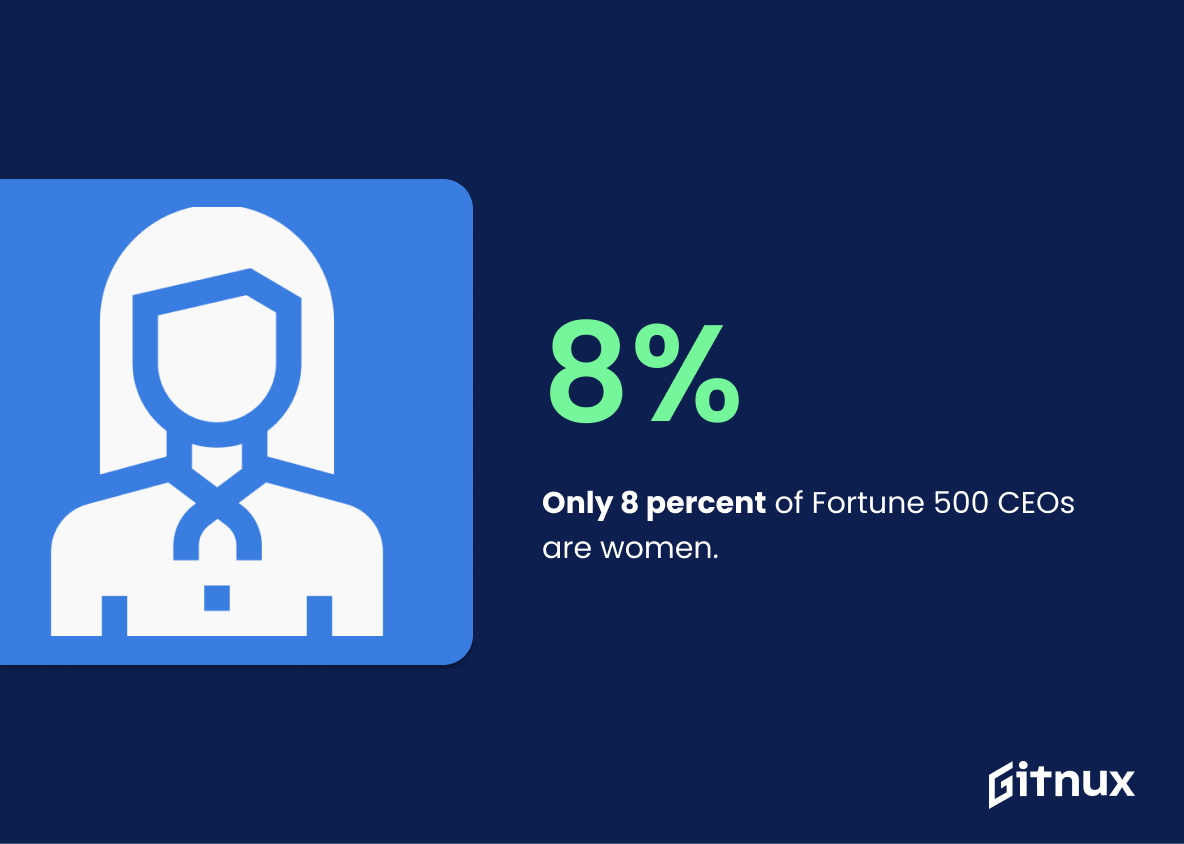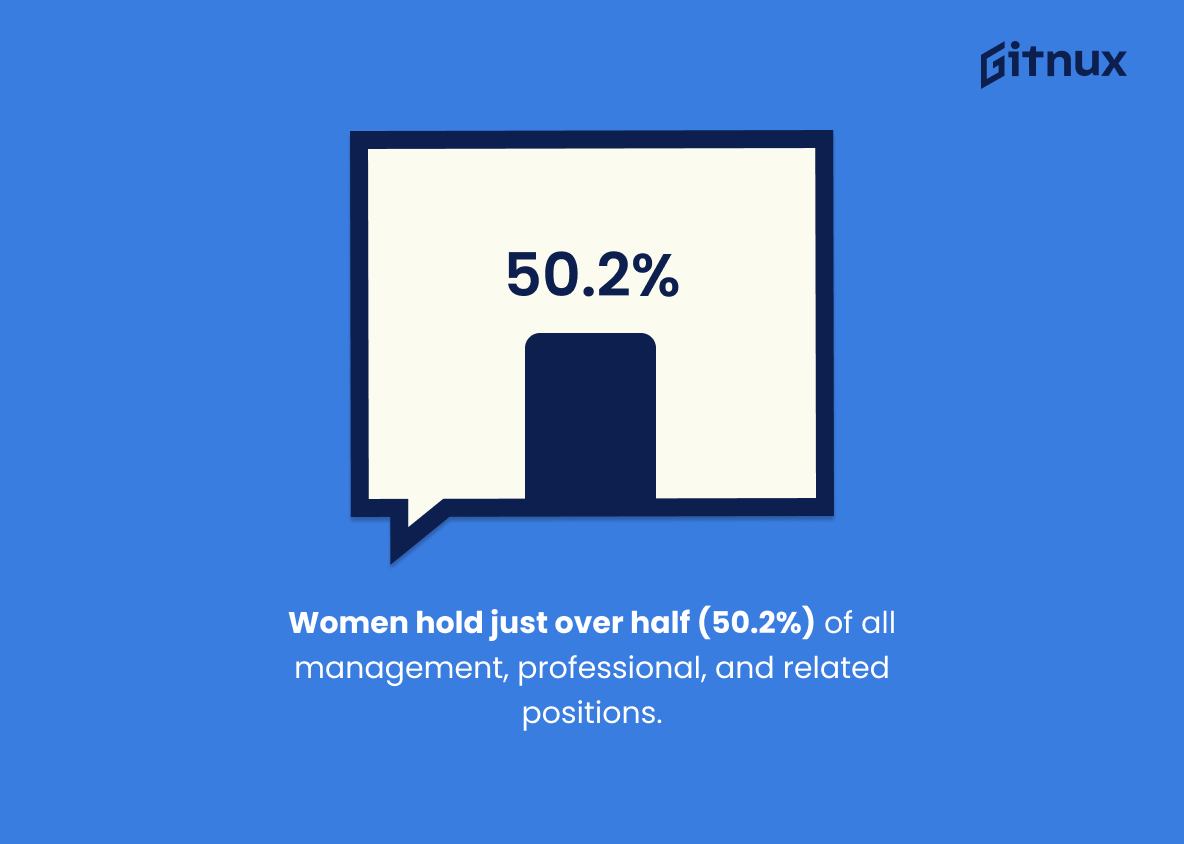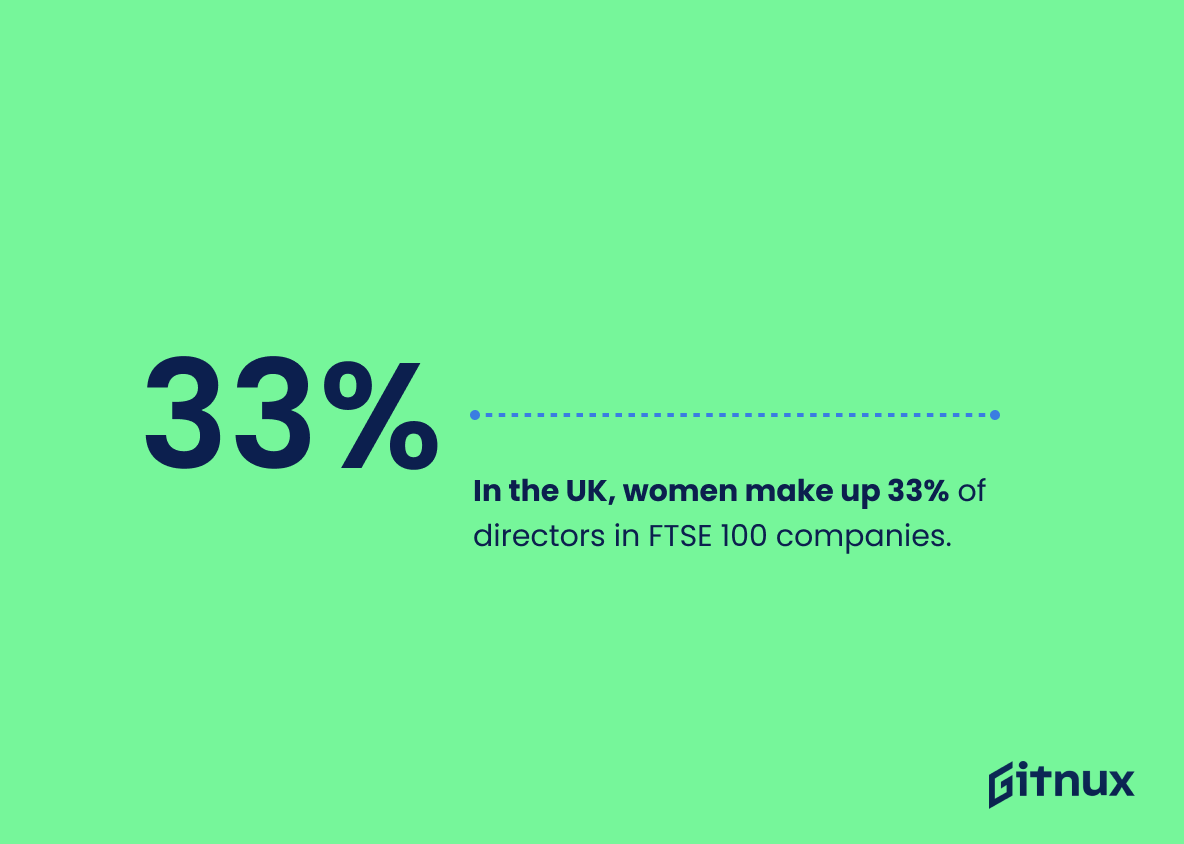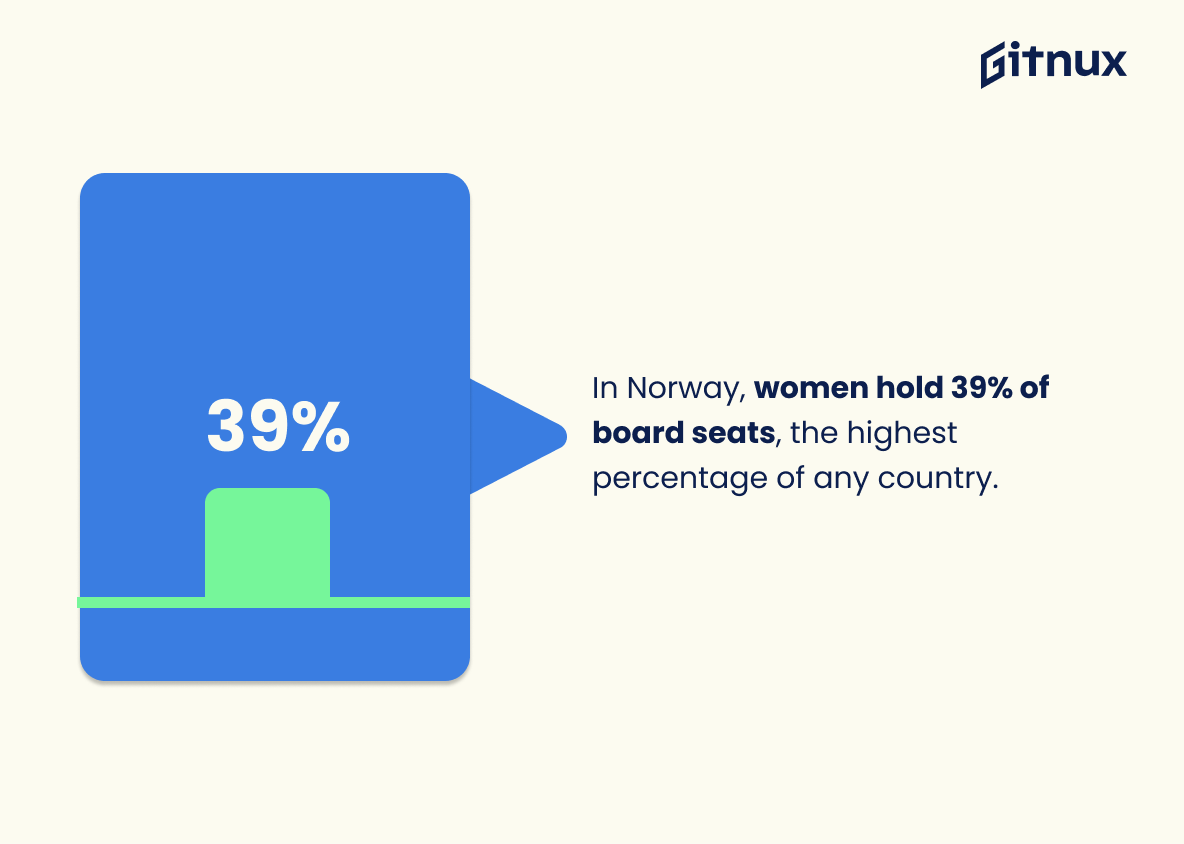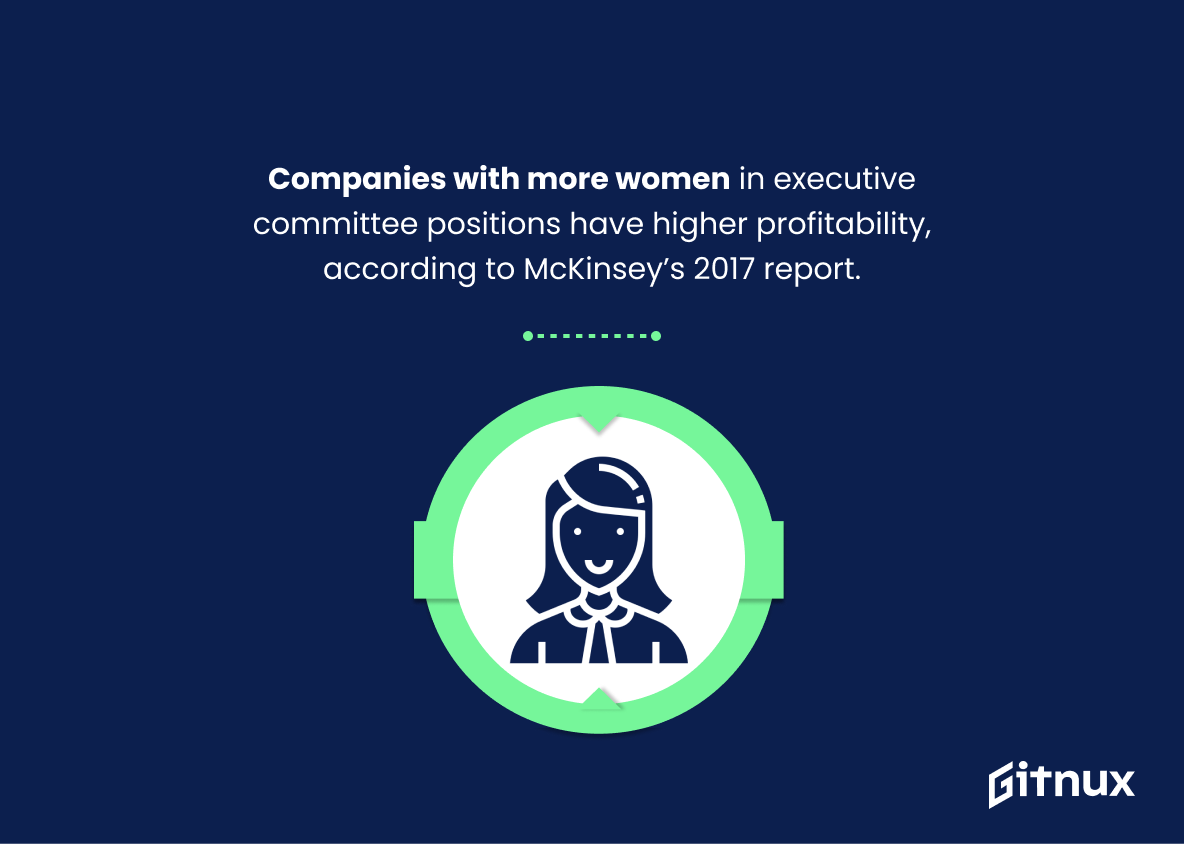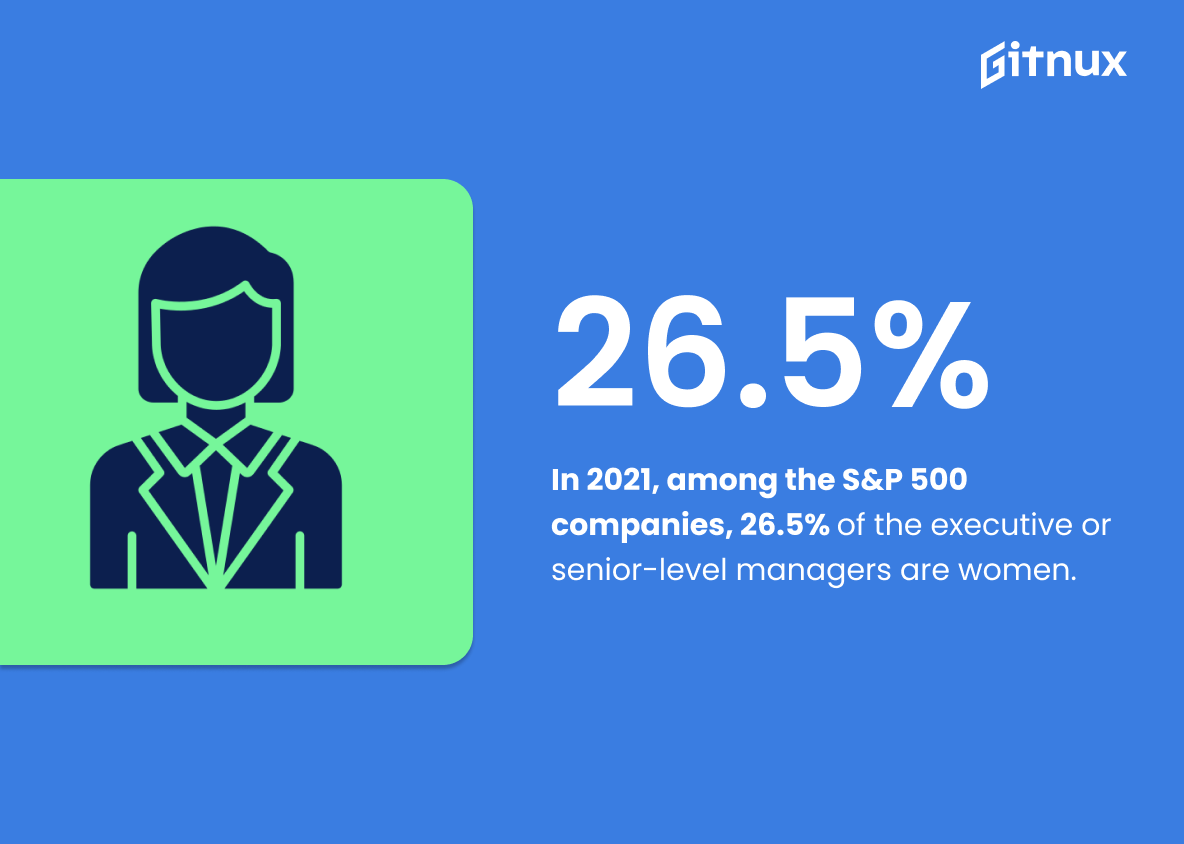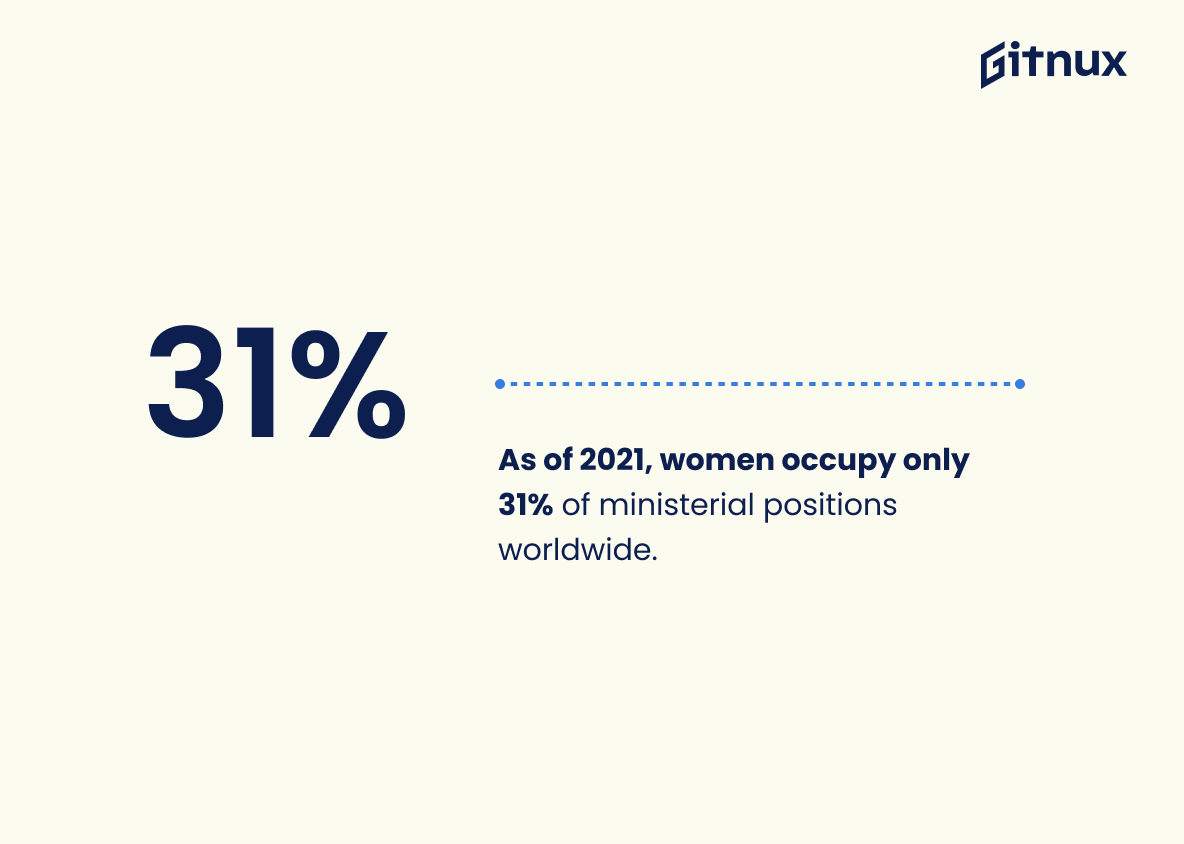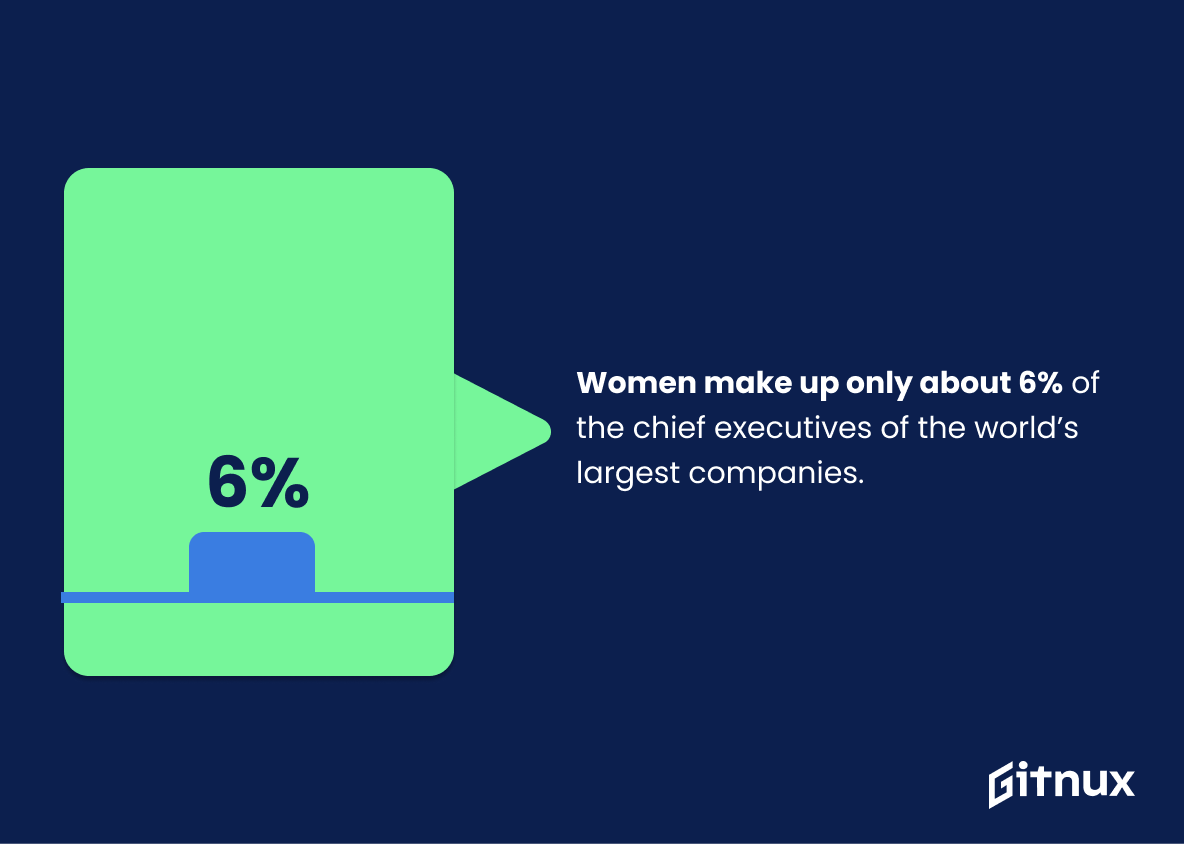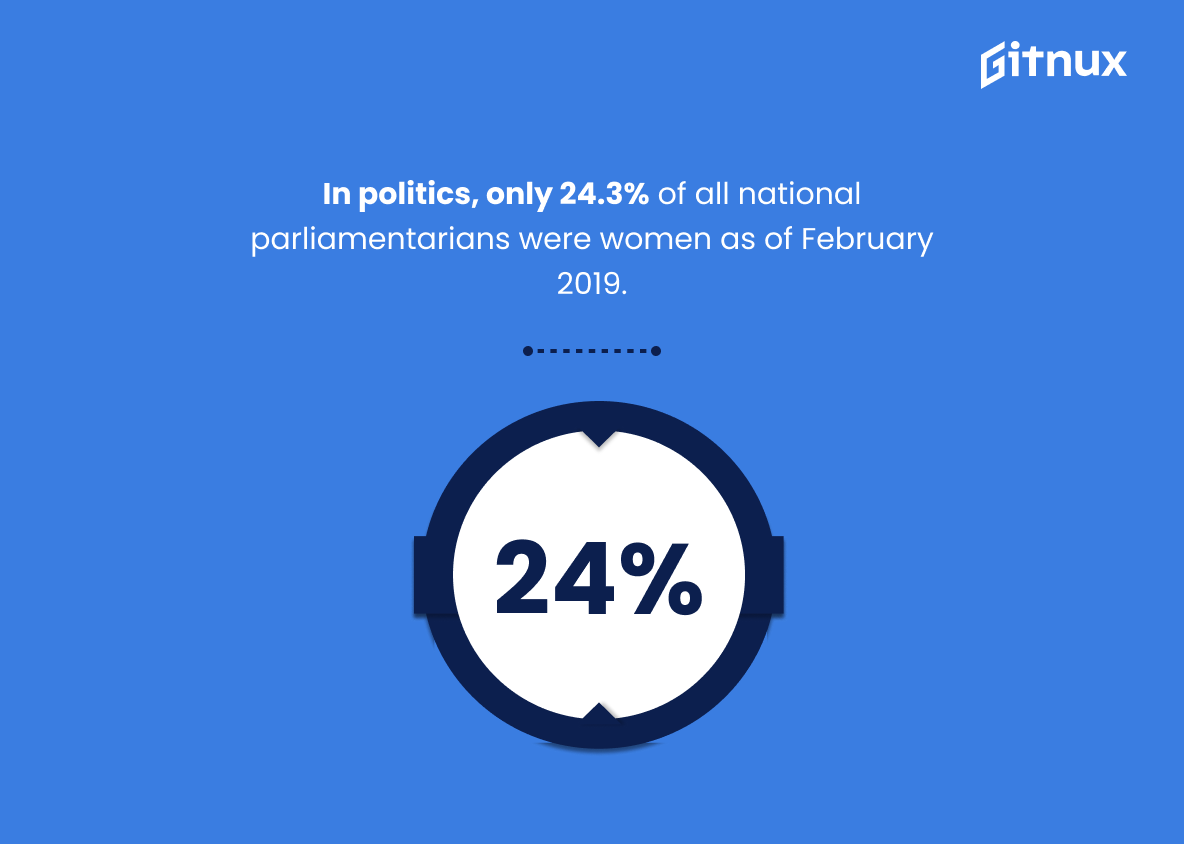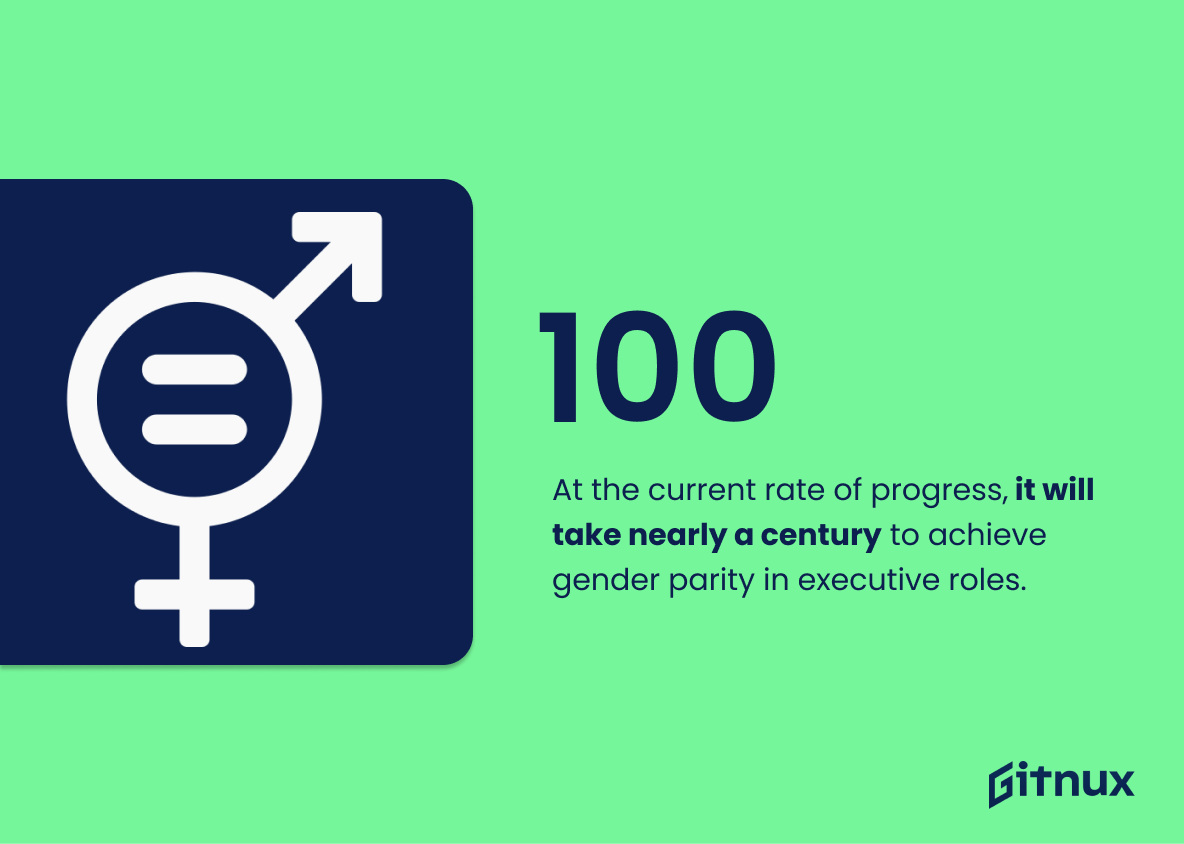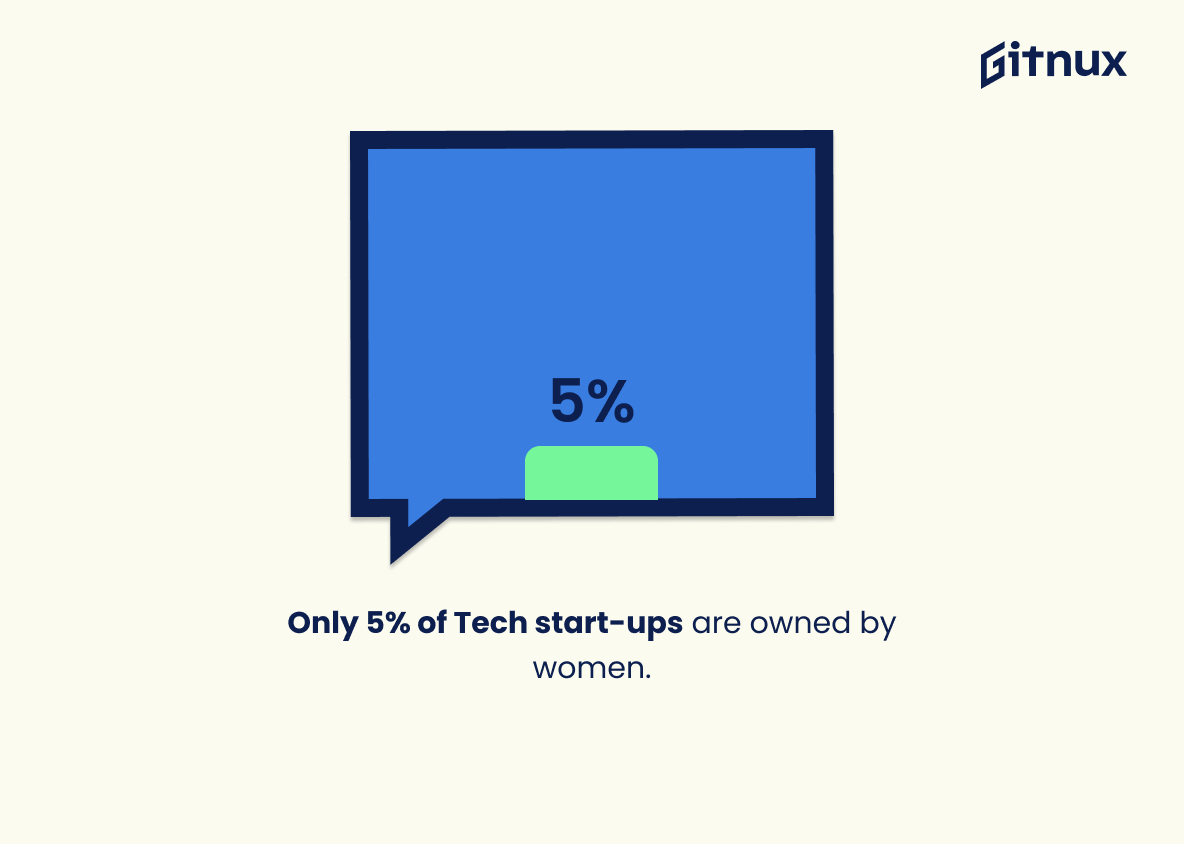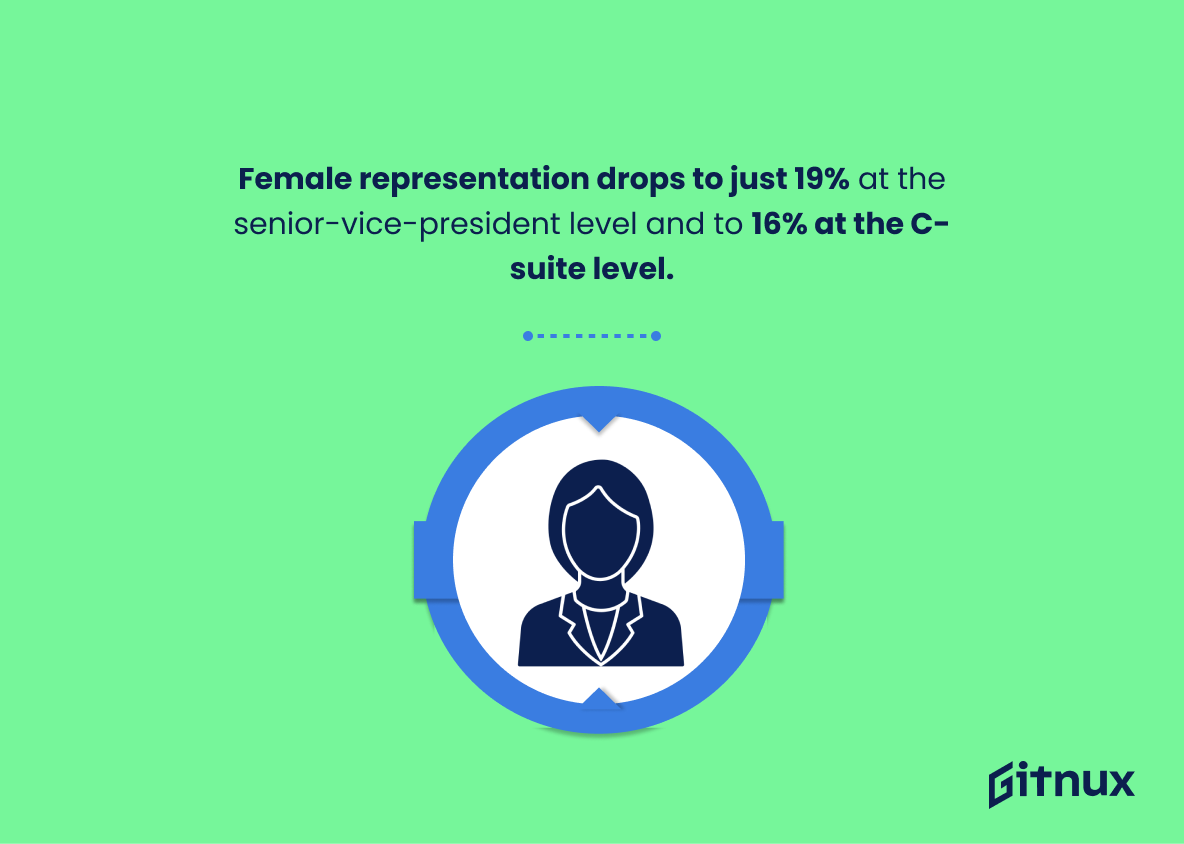In the modern world, more and more women are breaking through the glass ceiling, shattering age-old norms, and stepping into leadership roles. However, while the gender gap is steadily closing, there still remains a significant disparity in global leadership statistics. This blog post delves into Women Leadership Statistics, highlighting key data and figures on the prominence of women in leadership roles across diverse sectors. We will be examining and analyzing the growth, challenges, and dynamic scope of female leadership worldwide, reviewing significant trends and insights that continue to reshape the professional landscape. Ultimately, our objective is to raise awareness about the need for gender balance in leadership to foster a more equitable and inclusive society. So, join us as we explore the power of women at the helm, through the lens of compelling statistics.
The Latest Women Leadership Statistics Unveiled
Only 8 percent of Fortune 500 CEOs are women.
Highlighting the fact that a mere 8 percent of Fortune 500 CEOs are women serves as a striking revelation in the narrative of women in leadership roles. It underscores the reality of the gender disparity that still haunts prestigious executive positions, despite strides towards equality. Through a stark contrast of numbers, it pronounces the uphill battle that women have to endure to break the proverbial glass ceiling. It’s a clarion call for action, advocating for a leveled playing field, and an invitation to challenge the societal structures that continue to limit the rise of women to these lofty positions of leadership.
Women hold just over half (50.2%) of all management, professional, and related positions.
Unveiling this statistic shines a glorious beacon on gender equality progress, highlighting that women’s stride up the corporate ladder isn’t halted at the bottom stairs. It dismantles the outdated notion that leadership roles and professional opportunities are predominantly a male domain. Embodied in this 50.2% figure is a powerful testament to the growing recognition of women’s capabilities, competence, and ingenuity in professional settings. Painting the collaborative picture of leadership, this statistic is a concrete marker on the road to gender parity, becoming a beacon to all aspiring female leaders eyeing the pinnacle of the workforce.
In the UK, women make up 33% of directors in FTSE 100 companies.
Illustrating the ascent of women in the corporate ladder, this statistic showcases the shifting landscape across the UK’s FTSE 100 companies, with women holding a crucial 33% of directorships. It brings to light the strides made towards gender equality in the boardroom, even as it underscores how the journey is still far from finished. In a blog focusing on Women Leadership Statistics, such a data point serves as a significant beacon of progress, highlighting the achievements while remaining a potent reminder of the space still to be claimed. Smashing through not only glass ceilings but stale traditions, every percentage point is a testimony to the determination and resilience of countless women who work to reshape corporate Britain and the wider business world.
In Norway, women hold 39% of board seats, the highest percentage of any country.
Highlighting the impressive fact that Norway holds the record for the highest percentage of women on boards is a strong affirmation of female leadership. It not only embodies the pinnacle of equal representation in corporate governance worldwide, but also underscores the immense potential and considerable strides women have made in taking up leadership positions. In a blog post about women leadership statistics, this data point conveys ingenuity and provides profound insight, positioning Norway as a beacon of inspiration and an aspirational benchmark for other nations. It vitally provokes thoughts on how policymaking and corporate culture can influence the gender composition in boardrooms, hence shaping the discourse on women’s leadership roles globally.
Companies with more women in executive committee positions have higher profitability, according to McKinsey’s 2017 report.
Highlighting McKinsey’s 2017 report provides a powerful punch to the narrative of female empowerment in the corporate pipeline, arguing definitively for a gender-diverse boardroom. This significant statistic does not merely endorse the ethical need for equal representation but attests to a tangible economic advantage. The pronounced correlation between a greater female presence in executive committee positions and enhanced profitability underscores the importance of shattering the proverbial glass ceiling. Moreover, it provides compelling evidence to disprove lingering stereotypes regarding female leadership capabilities. This data calls corporations to action, demonstrating that gender inclusion in leadership is not only a social imperative but a strategic imperative for thriving in a competitive business world.
In 2021, among the S&P 500 companies, 26.5% of the executive or senior-level managers are women.
This striking figure illuminates the prevailing landscape of women’s participation in leadership roles within the sphere of S&P 500 companies in 2021. Notably, the proportion of women occupying executive or senior-level management posts stands at 26.5%. This detail serves as a crucial barometer, tracing the progress (or the lack thereof) of gender parity in corporate corridors of power. It’s an eye-opening snapshot, presenting compelling evidence that, while strides have been made in breaking down glass ceilings, we are yet to close the gender leadership gap. Undoubtedly, this snapshot fuels the dialogue surrounding the urgency of amplifying women’s voices in the boardroom and calls for corporate cultures to pivot towards a more balanced representation of genders in leadership ranks.
Women account for less than a third (29%) of senior roles globally.
Showcasing the glaring disparity in leadership composition, the stark figure of women holding just 29% of senior roles globally underscores the extent of gender bias that still exists in the corridors of influence and authority. This count shines a spotlight on the significant gaps in gender parity, propelling the appeal for a more balanced representation of women at the highest levels of decision-making. In the universe of women leadership statistics, it depicts not just a number, but a story – a narrative that urgently calls for change in global leadership dynamics. Therefore, as we unravel the knot of gender inequality, this statistic stands as a critical marker highlighting the distance we have yet to cover.
As of 2021, women occupy only 31% of ministerial positions worldwide.
Highlighting the interesting yet startling statistic that women hold merely 31% of ministerial positions globally, as observed in 2021, is an eye-opener in the conversation around Women Leadership Statistics. This figure underscores the continued existence of the gender gap in political leadership positions, challenging preconceived notions that we have achieved gender equality. It ignites an urge to acknowledge and challenge the barriers inhibiting women from attaining top-tier roles. A point of discussion, this statistic demands introspection, pushing us to examine the driving forces of gender disparity in leadership roles and urge governments and organizations worldwide to take definitive actions towards ensuring balanced representation in leadership.
Women make up only about 6% of the chief executives of the world’s largest companies.
In painting the landscape of women’s leadership statistics, we’d be remiss not to shine light on the startling revelation that a meager 6% of chief executives of the world’s largest companies are women. This limited presence at the top echoes a sobering reality about the gender disparities at the apex of the corporate ladder. Spaces of decision-making power continue to be overwhelmingly dominated by men, a trend which begs for analysis and action. This percentage, modest and sobering, is a call-to-arms, a highlighted area on the map of gender imbalance, illuminating the distance yet to travel on the road to equality. Through this statistic, we underscore the urgency for diversified leadership, the need to shatter glass ceilings, and the importance of creating opportunities for women in leadership positions across the globe. This data serves as a glaring spotlight, guiding discussions, blog posts and indeed our collective efforts toward empowering more women and bolstering their representation in top leadership roles.
In politics, only 24.3% of all national parliamentarians were women as of February 2019.
This vibrant percentage, reflecting only 24.3% representation of women in national parliaments as of February 2019, provides critical insight into the global paradigm of women leadership. It sets the stage for a crucial discussion on gender representation and reveals a chasm that underscores the need for directed efforts towards fostering female participation in politics. Within the narrative of Women Leadership Statistics, it serves not just as a factual point, but an eloquent indicator of the broader realities women face in their pursuit of leadership roles, illuminating the steep mountain that we, as a society, have yet to fully climb.
At the current rate of progress, it will take nearly a century to achieve gender parity in executive roles.
Peeling back the layers of this remarkable statistic illuminates a profound complexity in the narrative of women in leadership. Diving into a century-long horizon to achieve gender parity in executive roles punctuates the slow and steady march on the path to gender equality. In the context of a blog post about Women Leadership Statistics, this data point stands as a stark monument to reinforce the magnitude of the problem. It paints a vivid portrait of the existing gender disparity and underlines the urgency for more accelerated change. Consequently, it breathes life into our call for action and captures the reader’s attention, fostering perceptive insights into the deep-seated issue of gender imbalance in executive roles. Every time we quote this statistic, we remind our readers of the long battle ahead, reinforcing the necessity to join forces to fast-track progress, thus making this statistic a cornerstone of our argument.
Only 5% of Tech start-ups are owned by women.
Honing in on the minuscule 5% of tech start-ups owned by women casts a magnified lens over the gaping underrepresentation in the world of tech entrepreneurship. Evidently, the playing field sways noticeably against the emergence of women leaders in this vibrant sector. Conveying the starkness of this numeric reality further propels the urgency to address the gender disparity, making it pivotal to any conversation about women leadership statistics, especially within the context of a blog post. This numeric spotlight vividly illustrates the broader narrative of the gender divide, giving readers a gritty feel of the momentum we need to gather towards achieving gender equity in tech start-ups.
Women represent only 16% of board members in the financial industry.
Highlighting the fact that women make up just 16% of board members in the financial industry uncovers a stark disparity in leadership roles within an important sector. This is a sobering reminder within the narrative of female empowerment and advancement, showing us that despite progress elsewhere, the boardrooms in the financial industry still remain largely male-dominated arenas. These numbers provide hard evidence of the gender gap that continues to exist, helping to spark discussions, inspire change, and set the stage for future improvements in female leadership representation.
60% of the world’s educated, yet unemployed, are female.
Peeling back the layers of that ‘60% of the world’s educated, yet unemployed, are female’ statistic, a stark reality unfolds. The figure underscores a significant hiccup in the roadmap to women’s leadership. Although education is a pillar of empowerment, an educational degree in hand has not translated to employment for a considerable number of women. This barrier remains a stumbling block on the path to leadership roles. Revealing this stark contrast draws attention to an utmost necessity: understanding and addressing this discrepancy to further the discourse on women in leadership roles. In the grand landscape of promoting gender parity, this statistic is a glaring point of action. The blog post delving into Women leadership statistics would not be complete without broadening the brush strokes to include this aspect. So, envision this not just as a statistic, but a rally for realizing true equality and advancement for women in dynamic leadership roles.
Female representation drops to just 19% at the senior-vice-president level and to 16% at the C-suite level.
To plumb the depths of gender imbalance in corporate leadership, this engrossing numerical revelation offers invaluable insights. A declining trend emerges in female representation as we ascend the corporate ladder, descending sharply from a paltry 19% at senior vice president posts to a mere 16% at the echelons—the C-suite level. Diving headfirst into this percentage plunge, we uncover a narrative of dwindling opportunities, glass ceilings, and unspoken biases, ferociously grappling with the dream of gender parity in C-suites and boardrooms. Therefore, in scrutinizing women leadership statistics, this figure pulls back the curtain on the underlying gender discrepancies, reminding us simultaneously of the progress made and the steep summits that are yet to be conquered.
Conclusion
In summary, the women leadership statistics underscore the dramatic transformation that has happened over recent decades, with an increasing indication of growth and prominence of women in leadership positions. Yet, it’s clear that a gender gap still exists, demonstrating we have a long road ahead to accomplishing absolute equality. As societies and economies continue to evolve, it is essential to utilize the full potential of both genders. Through strengthening our focus on mentorship, opportunity provision, and breaking down systemic barriers, we can cultivate an environment where everybody, regardless of their gender, has an equal chance at leadership. Every statistic spins a story, and the women leadership statistics tell a tale of gradual advancement, resilience, and unswayed commitment. As we continue to build on this data, let’s ensure the tale continues towards a trajectory of unequivocal equality and inclusion.
References
0. – https://www.www.catalyst.org
1. – https://www.data.unwomen.org
2. – https://www.www.pewresearch.org
3. – https://www.www.government.se
4. – https://www.www.bbc.com
5. – https://www.hdr.undp.org
6. – https://www.www.grantthornton.global
7. – https://www.www.marketwatch.com
8. – https://www.www.oliverwyman.com
9. – https://www.www.weforum.org
10. – https://www.www.dol.gov
11. – https://www.www.mckinsey.com
